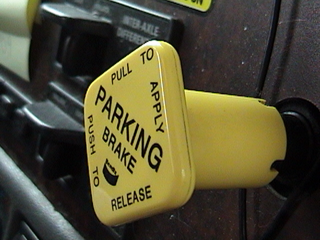After finally reaching the decision that we wanted to buy a bus, we began the search.
After searching and researching for about 8 months we finally found a bus that we felt comfortable calling “the one” - a silver and blue 1965 GM PD 4106. Unfortunately, it was about 800 miles away in Davis, California. We called to see if it was still available. “Yes, the bus is still avaliable,” Steve said over the phone. He was disappointed when I told him we could not make it for another 2 weeks due to a conference I had to attend. We were not willing to put down a sizeable deposit on something that we had not seen in person. In addition, it was clear from our many phone calls with Steve that he didn’t know much about the bus. Since we had seen vintage buses take months to sell, and we had only seen one other bus in person (another story for another time), we were in no hurry. However, during those two weeks, someone bought it. Bus #1 was a bust.
To keep things organized, we had been keeping a spreadsheet of buses all over the country, tracking a couple dozen things like location, tank sizes, generator size, tire condition, layout etc. Each bus on the list received a nickname: “Purple Elvis”, “Last Lap”, “Navy Baby”, “Purple Newell” were among the names on our list. Since the “Davis Airbus” sold before we could get out to see it, we decided to pursue our second choice. “Barstow Green” was a green 1962 GM PD 4106.
We had been slowly getting the details of this bus over the previous 2 months, asking the owner, Matt, a million questions and having him send us different pictures and information. Matt had been very helpful and had assured us that the bus was in great condition - “ready to go” save for maybe paint and new tires (tires, he added, looked to have 90% tread but he thought they were “getting old”). We decided that we should take a look and buy this bus before it too was sold.
Unfortunately, we did not have anyone to watch the kids that weekend, so I invited a friend on this adventure. Skylyr was available and excited to go. He is a diesel mechanic so that seemed like a handy person to take along. The plan was to leave very early Saturday morning after helping Michelle set up a yard sale, to spend a few hours looking the bus over, to buy the bus, and then to head home and sleep in the bus somewhere along they way, finally arriving Sunday mid-morning.
We left Gilbert, Arizona about 5:30am en route to Barstow, California (394 miles and 6 hours and 13 minutes according to Google maps).
I have known Skylyr for about 4 years now. For about 2 or 3 years we would see each other nearly everyday training Brazilian Jiu Jitsu together at the 6:00am class. The really neat thing about road trips is you really get to know the person you are traveling with. Skylyr and I had some great conversations and the six and half hours seemed to fly by. Before we knew it, we were in Newberry Springs (just east of Barstow) enjoying a Subway sandwich and calling Matt to let him know we would be arriving at his place in about 30 minutes.
On the way over we had joked that perhaps this whole thing was a hoax and it was really some kid in NY baiting us to drive this far. Fortunately, that did not happen and after being let through the security gate we were finally looking at the bus in person.
Michelle and I had spent hours poring over photographs of the bus, engine compartment, storage bays, interior, and now here before us was the bus in real life. My heart raced. For some reason it looked much larger than I imagined. Like taller and just … big.
Matt showed us around the exterior. We knew it would need paint - and it did. Most of the paint was badly faded and flaking off. The metal was actually in worse shape than I had hoped with clear evidence of sloppy bondo work and many dinged and dented panels.
We inspected the tires next. These were also in much worse condition than Matt had described. There was dry-rotting and cracking around the center of the tire. The “DOT code stamps” on the tires told us that the tires were new in 2003 - nearly 13 years ago. Skylyr informed me that big diesel tires like this were not supposed to be road worthy after 7 years according to his shop.
We went around to the back of bus to have a look at the engine. This particular bus had been “repowered” in 2004 with a Detroit Diesel 6V92TA - a more powerful and newer engine than the one it had originally powered the bus (a Detroit Diesel 8V71N). Unfortunately the engine did not come equipped with a “Jake Brake” or any kind of transmission “retarder”. (I have read online that on a big bus like this a "Jake Brake" can be extremely helpful to not overheat your brakes when descending down the mountains. Some folks online went as far as to insist that large diesels without either of these were not safe.) The engine appeared to be in good shape so we asked Matt to fire it up.
Back to the front of the bus, he showed me the controls - two large silver knobs that look like they would be at home as a volume adjuster on a huge 80’s boom box. He turned one of the large silver knobs to “Daylight” and then told me the starter switch did not work so we would need to turn the engine on from the back of the bus. (There was no ignition key!) In the back of the bus there was a set of rocker switches and one of these fired the starter. Of course I asked Matt what the other rockers did (4 all together): “I don’t know”. Just a touch of this button and the big diesel engine roared to life. Black smoke came billowing out of the exhaust pipe and the engine settled into a nice rhythm. I was told to watch for excessive smoking and especially for white smoke - but I did not see any white smoke and the engine only blew out black smoke when it was first started or when I would rev it hard.
After waiting for the air pressure to build to about 115 psi, the bus was ready for a test drive. I had assumed Matt would be giving us the test drive, but he insisted I would be driving! I didn’t want to seem like I was nervous in front of my Jiu Jitsu friend Skylyr, so I pretended like “yeah I got this” - on the inside I was freaking out a little. For fun Matt had me pull the big airhorn mounted on the roof that sounded just like a freight train horn! After adjusting the seat, seatbelt, and familiarizing myself with the layout of the dashboard I was ready to take the big bus out.
The transmission control was a small toggle switch next to the dash. Toggling it illuminates a small, red digital display that tells you what gear you are in. It seemed like such a stark contrast to the enormous wheel used to steer the bus. With a toggle of the switch, the digital display read “1”. Matt told me "we are not in gear yet, sometimes that thing reads funny". Again I toggled, the bus jerked forward, and the display read “2”.
Most vehicles with air brakes come with a parking brake labeled with a big yellow diamond that you must disengage before the vehicle will move.

Source
This bus was no exception. I pushed in the big yellow diamond and away the bus went! At this point Matt told me the brakes need adjusting so I would need to push pretty hard to get the bus to stop!
We started to idle down the front of the lakeside homes, and I quickly found out what Matt meant when he said the brakes needed to be adjusted. I had to push the brakes almost all the way to the floor to get the big bus to slow down. A short wait while the entrance gate to the community opened up and we were out on the open road! Driving the bus was a real thrill. I was immediately surprised at the relative quietness of the bus as it was going down the road. As soon as we got up to speed, it was apparent that the speedometer was not functioning (still reading 0mph). "That must have just happened," insisted Matt.
Another surprise was how many turns it took on that huge wheel to get the bus to turn around a corner. This bus came equipped with a “suicide knob” - a small spinning handle that clamped on the wheel to assist in turning that big wheel. I learned that this “suicide knob” was not just for show! The brakes needing to be pressed so far down was a constant concern, but I WAS DRIVING THE BUS AND IT WAS AMAZING!
A short time later we had made a big loop and ended up back in front of Matt’s lakeside home. We all climbed out of the bus and I shut the door. Big mistake!

The front door didn't work, and there was no way back into the bus! Matt had failed to mention that the door was broken so once you close it there is no way to open the door from the outside (he then decided this would be a good time to mention something about a small spring missing from the door mechanism). Now we would have to break into the bus - which Matt informed me he had done before. I basically “boosted” him up through the back window and into the bedroom where he climbed forward and opened the door from the inside. Upon inspecting the front door, some of the panels were being held on with duct tape and the door had many stress and grind marks in it. Not a great way to start the inspection.
We decided to start with the outside bays on the driver’s side. The first sign of trouble showed up in the “house battery” compartment. There was clearly a footprint for 2 or 3 very large batteries (maybe 8D in size) but only one little car battery was in there. Matt mentioned that the batteries “might be kind of weak” but they were basically non-existent. Next was the generator - which looked great. It’s an Onan Diesel 7.5 kW generator with remote start and monitoring with only about 700 hours. I checked the oil which was full and looked clean, so I tried to fire it up. It did start but then quickly stalled out. I tried 3 or 4 times and each time it would fire up, run for a very short time, then stall out.
The electrical bay was next with the usual assortment of wires and junction boxes. Things were a little dusty but appeared to be in working order. Next to that were the propane tanks. They looked good and the lines for the gas also looked good. They read about half full. Lastly on the driver’s side were the coach starting batteries. These were massive - 2 very large black boxes with large gauge cable coming off of the leads. These seemed to be in good condition.
Around the other side of the bus, the bay nearest the rear tires had a large “joey bed” which is a large framed sliding drawer. The wood used to make the joey bed appeared to be pretty warped and weathered, but it did kind of slide out when we yanked on it.
Here is where things started to get even more “interesting”. In the middle on the passenger resided the water tanks (opposite the electrical bay on the other side). The bus had 3 very large stainless steel tanks - 100 gallons of fresh water, 60 gallons of “black water” and 60 gallons of “greywater”. Unfortunately, the fresh water tank had ALL OF THE LINES CUT! They were literally cut out with a hacksaw. In addition, the tank was not secured. There were two pieces of wood lying next to the tanks with screws in them. I asked Matt about that and he said the fresh water tank had developed a small leak so he had pulled it out to have it re-welded and had not had it put back in. “It’s like a 5 minute job” he insisted.
Next to the water bay was a bay with some sort of air-handler in it. I asked Matt if that was indeed an air-handler, but, again, he did not know. At this point I got my notebook out and started making notes for the eventual phone call I would have to have with Michelle.
While we were outside, Matt had turned on the air conditioner in the front to allow the bus to cool down while we inspected the outside. He then went inside his house to work on some projects.
The theme of “wow there are many things not working” continued inside the coach. I had wondered why Matt had not turned on the rear a/c but quickly found out why - it was broken. Not only that, it also blew the power circuit. The bedroom and bathroom looked OK, but of course the fresh water tank had been cut, so there was no way to test any of the fixtures or the hot water heater. I went on to test all the light switches along with noting when drawers would not close properly or had broken hardware. We blew the circuit breaker at the house for the third time. I mostly blamed the thin extension cable Matt had used to power the bus.
At this point I called Michelle and began to question if this bus was more trouble than it was worth. We expected to do some work, but this bus had some pretty significant problems in each of the major systems.
The kitchen area was actually pretty nice: black stone countertops, a 3 burner stove/oven, large stainless double bowl sink, and plenty of storage above and below.
The last major system we could test was the LP gas system. For this, we asked Matt to come back out and show us how to turn it on properly. At this point he admitted that in his 10 years of owning the bus he had never once lit the stove. What?! We opened up the tanks underneath and came up to try to light the stove. It did light and work as expected. I would have loved to see the hot water heater tested out (gas also) but the fresh water tank was cut.
Now, we were about 3 hours into the inspection. The refrigerator was powered on earlier in the hopes that it would cool down to allow us to see it was working. No such luck - after 3 hours the fridge and freezer felt exactly the same as when we started. To make matters worse the circuit breaker had popped again and we had no power in the bus.
I decided to give the generator one last chance. I fired it up again and plugged in the bus the way he had showed me to run off the generator. Again the generator refused to stay running. What I noticed was that the solenoid that was used to modulate the throttle was not holding the throttle open. The generator would run fine when I held it with my hand. I then used a small stick to just pin the throttle and it continued running. Unfortunately there was no A/C power being generated at the outlets. It was pretty clear that this generator had some major problems as well. ($$$$)
I went to give Matt the bad news. I had just driven 7hrs and I was going to go home without a buying his bus. I explained to him that the generator was not working - he retorted and said he “knew it worked”. I told him in addition to that I could not even test the water because the lines had been cut. He got really panicky and said, “Oh no the water all works”. I asked him how he was going to show me the water works when the lines had all been cut - “Just watch!”, he said.
This takes us to the most ridiculous part of the story. He proceeded to pull a hose to the bus and hook it into the fresh water intake. He then started to fill the fresh water tank, and, of course since the lines had been cut, water was spilling out and all over the undercarriage. He then tried to line up the big stainless tank so it was directly under the plumbing to fill it. This resulted in a giant mess. He fiddled with it until most of the water was going into the tank. The next problem was that the outlet for the tank was also cut. To address this he tried to use a piece of rubber hose that was about twice too big around. We waited about 40 minutes for there to be enough water in the tank for the water pump to work. Finally, it was kind of working, and he ran into the bus and turned on the water in the kitchen sink. “See! There we have running water!” he exclaimed in a victorious voice. You could really feel his sense of relief.
I went in the coach to verify, and there was indeed running water coming out of the tap. I then thought it might be wise to test the other faucets and check for leaks. As soon as I opened the door to the bathroom, it was apparent that there was a MAJOR leak somewhere. The bathroom had begun to flood from behind the toilet. There was water leaking all over the electrical panel directly under the bathroom.

I took this as the last “sign”. It was time to head home 7-hours, empty-handed. Bus #2 - A BUST!





0 Comments
Comments powered by Disqus